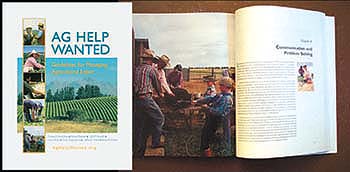All Issues
Science briefs: January-March 2003
Publication Information
California Agriculture 57(1):5-5.
Published January 01, 2003
PDF | Citation | Permissions
Full text
New grants support battle against olive fruit fly
UC's Division of Agriculture and Natural Resources has funded two new projects to combat the olive fruit fly, a pest that feeds directly on olive fruit and can devastate entire harvests. Since its first appearance in California in 1998, the olive fruit fly (Bactrocera oleae) has spread from Los Angeles throughout the state's commercial olive growing areas. It now infests at least 37 counties ( see page 28 ).
Funds totaling $230,000 will support investigations of the fruit fly's seasonal population dynamics and its biological control through the use of natural enemies. The funds are part of $1.8 million in specialty crop funding provided through the state's Buy California Initiative, administered by the California Department of Food and Agriculture.
UC Davis entomologist Frank Zalom and pomologist Louise Ferguson received $50,000 to further investigations to determine when mating and egg laying occur, and how they differ according to tree variety and climate. “If we can predict when the fruit becomes a suitable host for the flies, we can help growers predict when management options should be initiated,” Zalom says.
UC Berkeley entomologist Kent Daane and UC Riverside entomologist Marshall Johnson (located at UC Kearney Agricultural Center), and collaborators, have received $180,000 to support the importation and host-range testing of parasitic wasps that attack the olive fruit fly. Daane and Johnson, with scientists from the University of Hawaii and the U.S. Department of Agriculture, will import these natural enemies from sub-Saharan Africa. They will investigate the wasp further to ensure against any nontarget effects, particularly on native species. If the parasitoids do not pose significant threat, the scientists will release and attempt to establish them in olive fruit fly populations within 2 years. Foreign exploration is now under way.
Attracting, retaining and eliciting the efforts of capable employees have always been key to the productivity of California agriculture ( see page 13 ). To help supervisors and managers at all levels who make human-resource management decisions in agriculture, a consortium of land-grant university educators from seven states and Canada recently published Ag Help Wanted: Guidelines for Managing Agricultural Labor. UC Berkeley Cooperative Extension specialist Howard Rosenberg was lead author of the 242-page, full-color handbook. For more information or to place an order, go to www.aghelpwanted.org.





